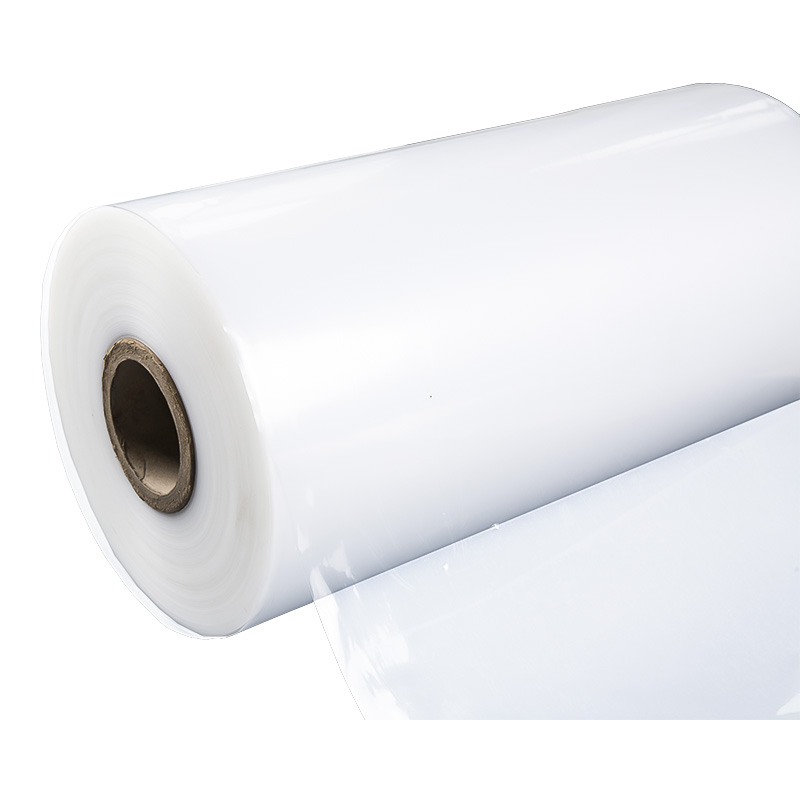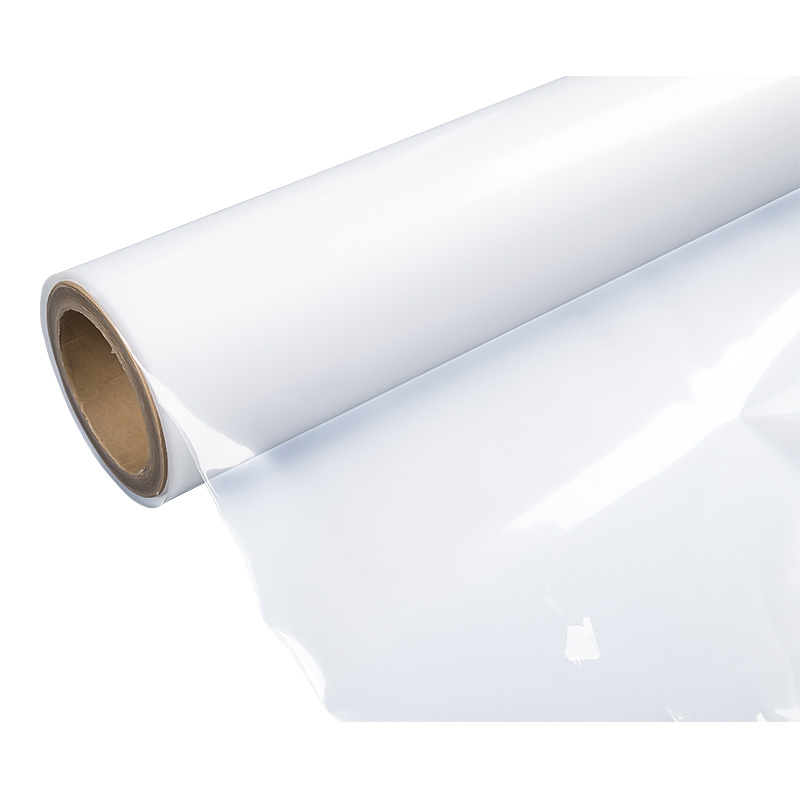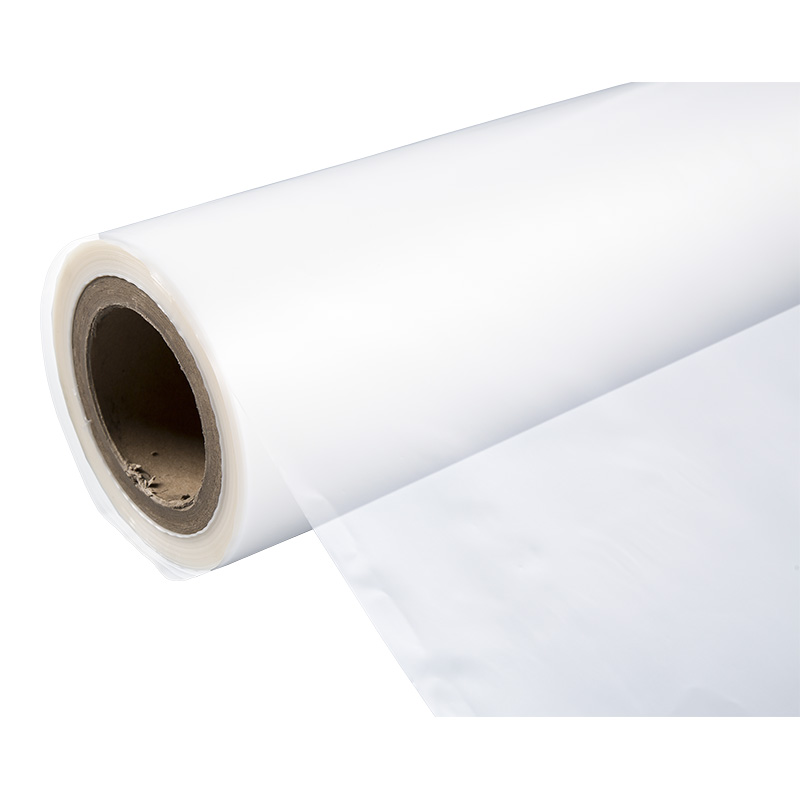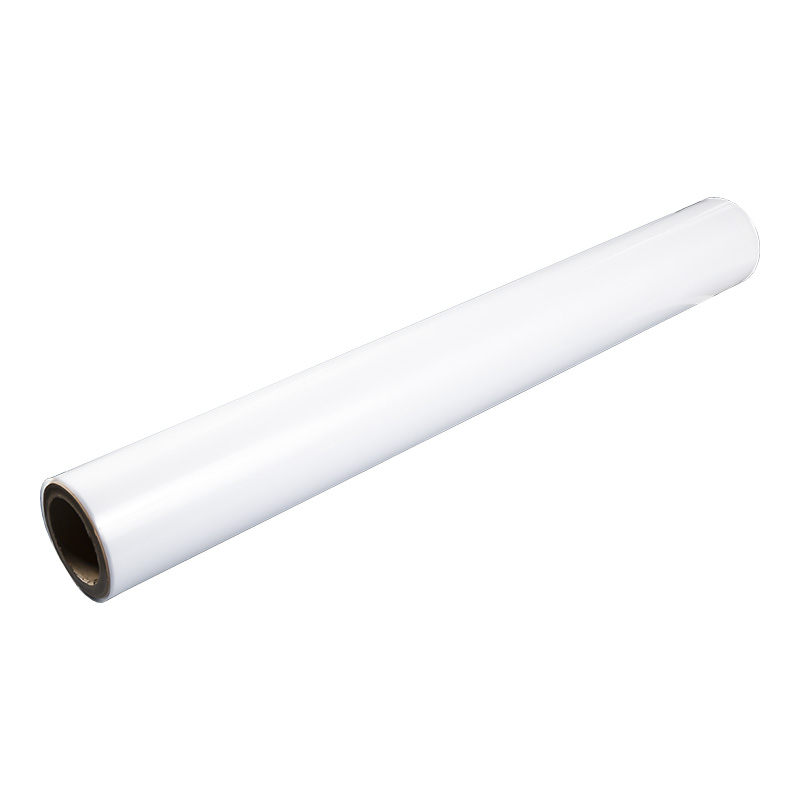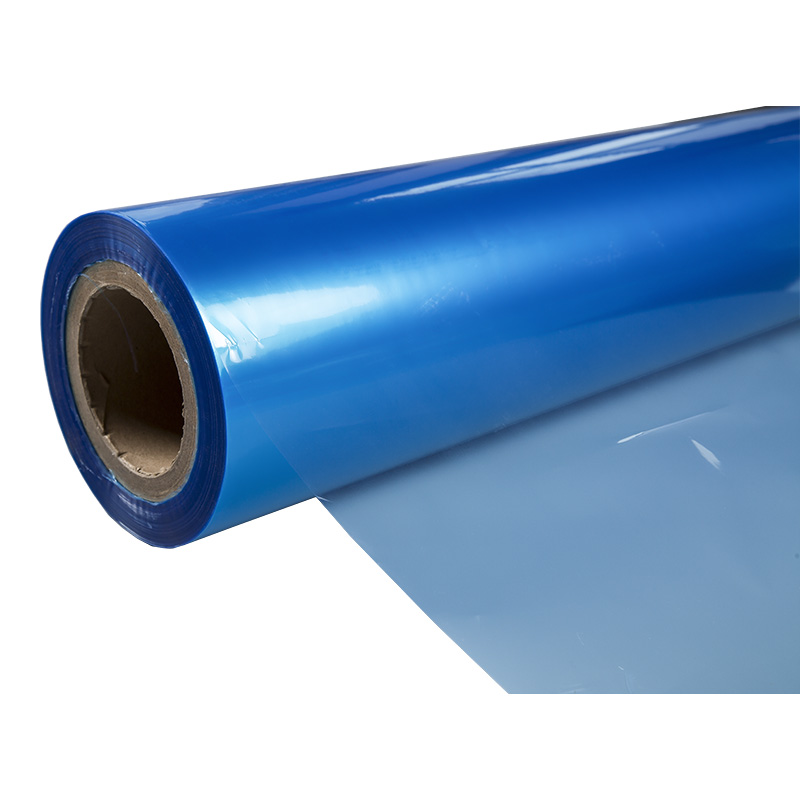What is Milky White Tissue Film?
Milky white tissue film, also known as tissue film, is a type of thin, flexible material commonly used in packaging and protective applications. Unlike transparent films, milky white tissue film has a slightly opaque appearance, which gives it a soft, diffused look. This characteristic makes it ideal for applications where light diffusion or privacy is needed.
The material is usually made from high-quality polymers, giving it strength and durability while remaining lightweight. Milky white tissue film is valued for its smooth texture, flexibility, and resistance to tearing or stretching. These properties make it suitable for wrapping delicate items, separating layers in packaging, and protecting surfaces from scratches or dust.
Additionally, milky white tissue film can offer some level of moisture resistance and can act as a barrier against minor contaminants. Its versatility and protective qualities make it widely used in industrial, commercial, and household settings.
In summary, milky white tissue film is a durable, flexible, and aesthetically pleasing material that serves a wide range of protective and functional purposes in everyday life.
What Are the Characteristics of Milky White Tissue Film?
Opacity and Light Diffusion
One of the most notable features of milky white tissue film is its semi-opaque appearance. This feature allows the film to diffuse light gently, providing a soft, visually pleasing effect. Unlike clear plastic films, which offer full transparency, milky white tissue film partially blocks direct light, making it suitable for applications that require some degree of privacy or aesthetic softening.
Flexibility and Strength
Despite its thin nature, milky white tissue film is highly flexible and resistant to tearing. This combination of strength and pliability allows it to wrap around delicate items without easily ripping or losing shape. The flexibility also makes it convenient for use in automated packaging systems, where the film needs to conform to irregular shapes.
Surface Texture
The surface of milky white tissue film is generally smooth and slightly matte, which reduces glare and makes it easy to handle. Its texture also enhances friction between layers when used in packaging, preventing slippage and improving stability.
Chemical and Moisture Resistance
Milky white tissue film is often engineered to resist minor chemical exposure, moisture, and dust. While it is not completely waterproof, it provides a protective barrier that can help maintain the quality and integrity of wrapped items, especially in industrial and household settings.
Temperature Tolerance
This type of tissue film can withstand moderate temperature changes without significant deformation. This makes it suitable for applications that involve temporary exposure to heat or cold, such as storage, transportation, and certain manufacturing processes.
Parameter Comparison Table: Milky White Tissue Film vs. Transparent Film
| Feature | Milky White Tissue Film | Transparent Film |
|---|---|---|
| Appearance | Semi-opaque, soft diffused look | Fully transparent |
| Light Diffusion | High | Low |
| Flexibility | High | Moderate |
| Tear Resistance | High | Moderate to high |
| Surface Texture | Smooth, slightly matte | Smooth, glossy |
| Moisture Resistance | Moderate | Moderate to low |
| Chemical Resistance | Moderate | Low to moderate |
| Common Applications | Packaging, protective wrapping, layer separation | Packaging, display, covering |
What Are the Main Applications of Milky White Tissue Film?
Milky white tissue film is widely used across various industries and in everyday life due to its flexibility, protective qualities, and aesthetic appeal. Its versatility makes it suitable for packaging, industrial applications, and household uses.
Packaging Applications
One of the most common uses of milky white tissue film is in packaging. Its semi-opaque appearance protects products from light exposure while still allowing partial visibility. It is often used to wrap delicate items such as electronics, glassware, ceramics, and other fragile products. The flexibility and tear resistance of the film ensure that products remain secure during handling and transportation.
Industrial Uses
In industrial settings, milky white tissue film serves as a protective layer between components, preventing scratches, dust accumulation, and minor chemical exposure. It is also used as an interleaving material in the production of laminated surfaces or sheets, reducing friction and protecting surfaces during storage and assembly.
Household and Everyday Applications
Milky white tissue film can be used at home for organizing and protecting items. It is ideal for wrapping gifts, separating layers of items in storage, or protecting surfaces during painting or craft projects. Its soft, matte texture adds a visually pleasing effect when used for decorative purposes.
Specialized Applications
Due to its light-diffusing properties, milky white tissue film is sometimes used in design and creative industries. It can be applied in lighting diffusers, photo backgrounds, or other situations where softening of light or visual effects is required.
Applications Table: Milky White Tissue Film by Industry
| Application Area | Specific Uses | Benefits of Using Milky White Tissue Film |
|---|---|---|
| Packaging | Electronics, glassware, ceramics, delicate items | Protects from scratches, light, and dust |
| Industrial | Interleaving layers, surface protection, assembly | Reduces friction, prevents minor damage |
| Household | Gift wrapping, storage separation, surface protection | Easy to handle, visually appealing |
| Creative / Design | Light diffusers, photography, decorative projects | Softens light, enhances aesthetic appearance |
How Does Milky White Tissue Film Compare to Transparent Film?
Milky white tissue film and transparent film are both widely used in packaging and protective applications, but they differ significantly in appearance, properties, and typical uses. Understanding these differences can help industries and consumers make informed choices when selecting the right type of film for specific needs.
Appearance and Light Transmission
Milky white tissue film is semi-opaque, providing a soft, diffused appearance. Transparent film, on the other hand, is fully clear and allows maximum visibility. This distinction makes milky white tissue film preferable in applications where privacy, light diffusion, or a soft aesthetic effect is required.
Flexibility and Durability
Both films are flexible, but milky white tissue film often has a slightly higher tear resistance due to its polymer composition. Transparent film can be very thin and prone to tearing if not carefully handled. This makes milky white tissue film more suitable for wrapping delicate items that require extra protection.
Surface Texture
Milky white tissue film typically has a smooth, matte surface that reduces glare and enhances handling. Transparent films usually have a glossy surface, which may make them slippery when layered or used in automated packaging systems.
Protection and Barrier Properties
While both films provide a degree of protection against dust, scratches, and minor moisture, milky white tissue film often performs better in reducing light exposure and minor environmental impacts. Transparent films prioritize visibility over light protection.
Applications and Use Cases
Milky white tissue film is favored for wrapping delicate or decorative items, interleaving layers in industrial production, and use in creative or aesthetic applications. Transparent film is commonly used for clear packaging, food wrapping, and situations where full product visibility is desired.
Detailed Comparison Table: Milky White Tissue Film vs. Transparent Film
| Feature | Milky White Tissue Film | Transparent Film |
|---|---|---|
| Appearance | Semi-opaque, diffused look | Fully transparent |
| Light Diffusion | High | Low |
| Flexibility | High, strong | Moderate, may tear easily |
| Tear Resistance | High | Moderate |
| Surface Texture | Smooth, matte | Smooth, glossy |
| Dust and Scratch Protection | Moderate to high | Moderate |
| Moisture Resistance | Moderate | Low to moderate |
| Typical Applications | Packaging fragile items, interleaving, decorative uses | Clear packaging, food wrapping, display uses |
| Aesthetic Effect | Soft, elegant | Minimal effect |
What is the Production Process of Milky White Tissue Film?
Raw Material Selection
The first step in producing milky white tissue film is selecting the appropriate polymers. Commonly used polymers include polyethylene (PE), polypropylene (PP), or a blend of materials that provide the desired flexibility, strength, and opacity. Additives such as titanium dioxide or other whitening agents are introduced to achieve the milky white color.
Melting and Extrusion
Selected polymers are melted at high temperatures to form a uniform liquid mass. This molten material is then extruded through a flat die or blown into a thin film. The extrusion process is carefully controlled to achieve the desired thickness, smoothness, and mechanical properties of the film.
Orientation and Stretching
After extrusion, the film is often stretched in one or more directions to enhance strength, flexibility, and tear resistance. This orientation process aligns the polymer molecules, giving the film improved mechanical properties while maintaining its soft, milky appearance.
Cooling and Solidification
The stretched film is then cooled using air or chilled rollers to solidify its structure. Controlled cooling ensures uniform thickness, prevents warping, and maintains the semi-opaque look characteristic of milky white tissue film.
Surface Treatment and Finishing
Depending on the intended application, the film may undergo additional treatments. These can include anti-static coatings, corona treatment to improve printability, or texturing to enhance grip and reduce glare.
Quality Control and Inspection
Throughout the production process, strict quality control measures are applied. The film is inspected for thickness uniformity, tensile strength, tear resistance, and opacity. Only film that meets all specifications is packaged for distribution.
Production Process Table: Key Parameters for Milky White Tissue Film
| Production Step | Key Parameters / Notes |
|---|---|
| Raw Material Selection | Polyethylene, polypropylene, whitening agents (TiO₂) |
| Melting & Extrusion | Temperature: 200–250°C, uniform melt, extrusion die thickness control |
| Orientation & Stretching | Stretch ratio: 2–4x, uniaxial or biaxial orientation |
| Cooling & Solidification | Air or chilled rollers, controlled cooling speed for uniform thickness |
| Surface Treatment & Finishing | Anti-static coating, corona treatment, surface texturing |
| Quality Control & Inspection | Thickness: 10–50 μm, tensile strength, tear resistance, opacity |
What Are the Market Trends and Future Developments for Milky White Tissue Film?
The global market for milky white tissue film is experiencing significant growth, driven by increasing demand across various industries, including packaging, hygiene, and consumer goods. This section explores the current market trends and future developments shaping the industry.
Market Size and Growth
The global tissue film market is estimated to be valued at approximately $25 billion in 2024, exhibiting a Compound Annual Growth Rate (CAGR) of around 6% between 2024 and 2030. This growth is largely fueled by rising demand from the hygiene and food packaging sectors. The market share distribution is somewhat fragmented, with the top three players holding a combined share of approximately 20%, while numerous smaller companies cater to specific niches or regional markets.
Key Market Drivers
- Sustainability Initiatives: Increasing consumer preference for eco-friendly products is driving the demand for biodegradable and recyclable milky white tissue films. Manufacturers are adopting sustainable materials and processes to meet these expectations.
- Advancements in Material Technology: Innovations in polymer science are leading to the development of milky white tissue films with enhanced properties, such as improved barrier resistance, greater flexibility, and better printability.
- Growth in End-Use Industries: The expansion of industries such as food and beverage, cosmetics, and electronics is contributing to the increased use of milky white tissue films for packaging and protective applications.
Future Outlook
The milky white tissue film market is expected to continue its growth trajectory, with advancements in material science and manufacturing processes playing a crucial role. The development of films with superior properties, such as enhanced moisture and oxygen barrier capabilities, will open new avenues for applications in sensitive product packaging.
Market Trends and Future Outlook Table
| Aspect | Current Trends | Future Developments |
|---|---|---|
| Market Size (2024) | Approximately $25 billion | Projected to grow at a CAGR of around 6% until 2030 |
| Sustainability | Increasing demand for eco-friendly materials | Adoption of biodegradable and recyclable films |
| Material Innovations | Enhanced barrier properties and flexibility | Development of films with superior protective qualities |
| End-Use Industries | Growth in food, cosmetics, and electronics sectors | Expansion into new applications and markets |
| Market Share Distribution | Fragmented, with top three players holding ~20% | Potential consolidation and emergence of new leaders |
Frequently Asked Questions (FAQ)
1. What makes milky white tissue film different from other types of films?
Milky white tissue film differs from other films, such as transparent film, primarily in appearance and functionality. Its semi-opaque look allows light diffusion and adds privacy, while still providing partial visibility of the contents. Additionally, it combines flexibility, tear resistance, and moderate moisture protection, making it suitable for packaging, industrial applications, and creative uses.
2. What are the main applications of milky white tissue film?
Milky white tissue film is widely used in packaging delicate items, protecting industrial components, and organizing household products. It is also applied in creative and design contexts, such as lighting diffusers and photography backgrounds, due to its light-diffusing properties. Its versatility and protective qualities make it a preferred choice across multiple industries.
3. How is milky white tissue film produced?
The production of milky white tissue film involves several steps, including raw material selection (typically polyethylene or polypropylene with whitening agents), extrusion, orientation and stretching, cooling, surface treatment, and quality control. Each step ensures the film maintains its semi-opaque appearance, flexibility, and durability, making it reliable for various applications.
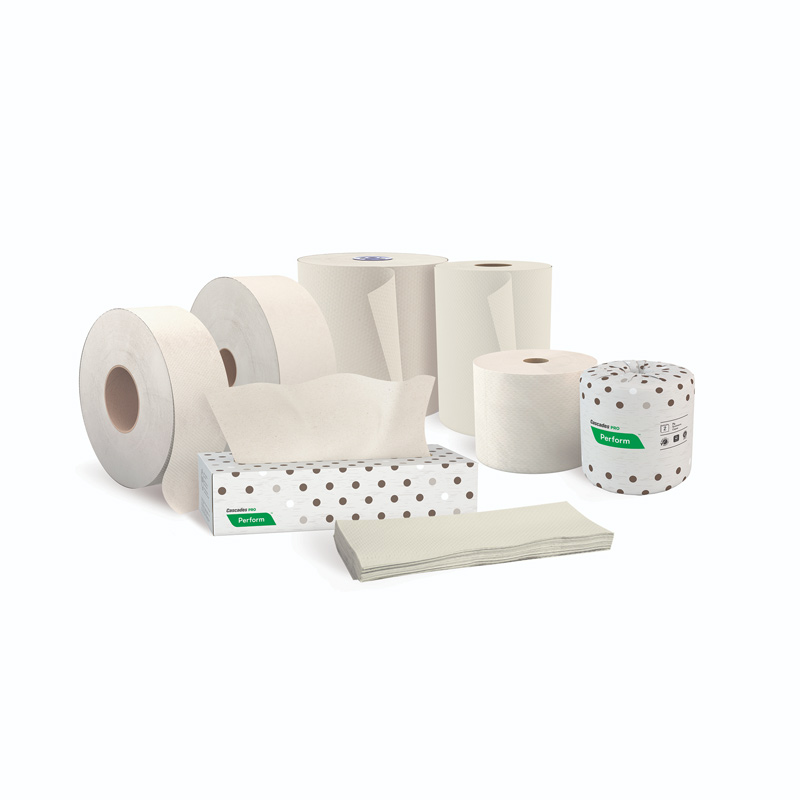
 +86 139-6715-0258
+86 139-6715-0258 
 Monday to Friday 8 am. to 6 pm.
Monday to Friday 8 am. to 6 pm. 
 English
English 中文简体
中文简体